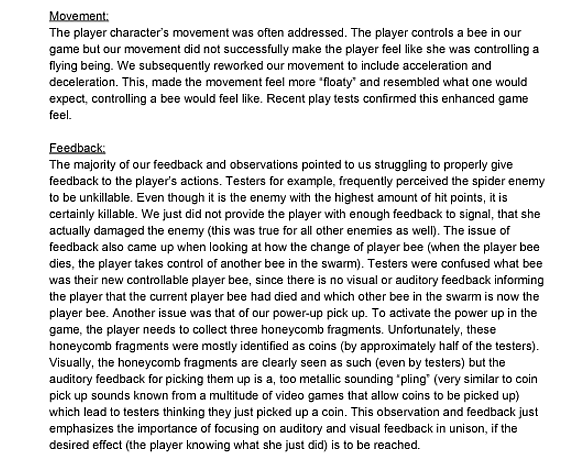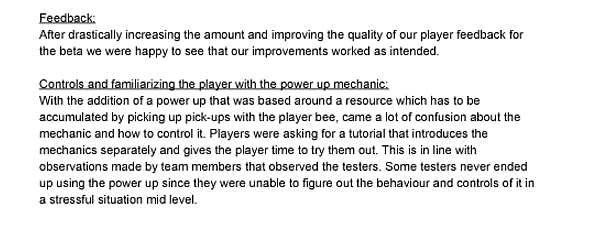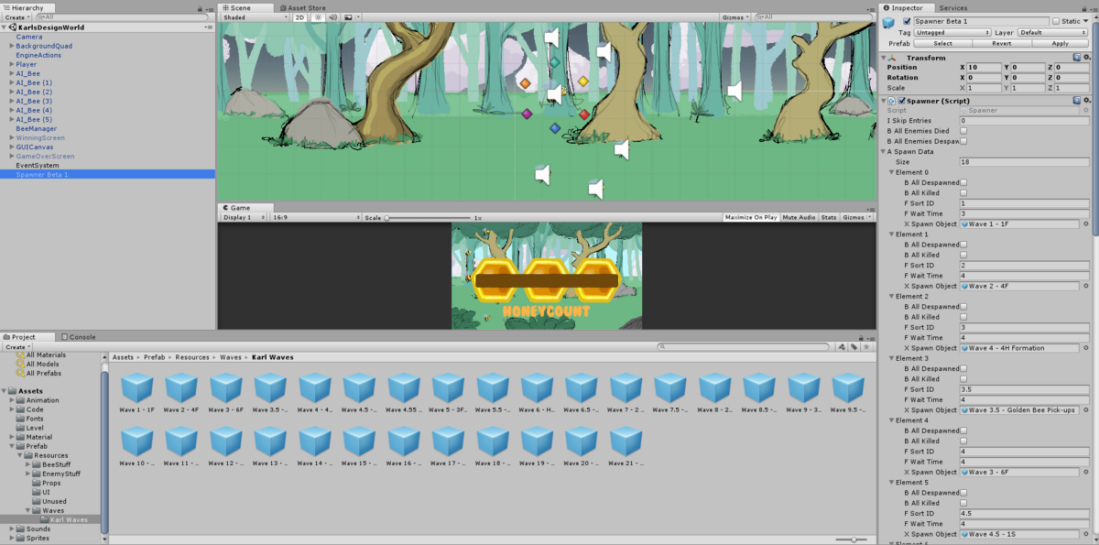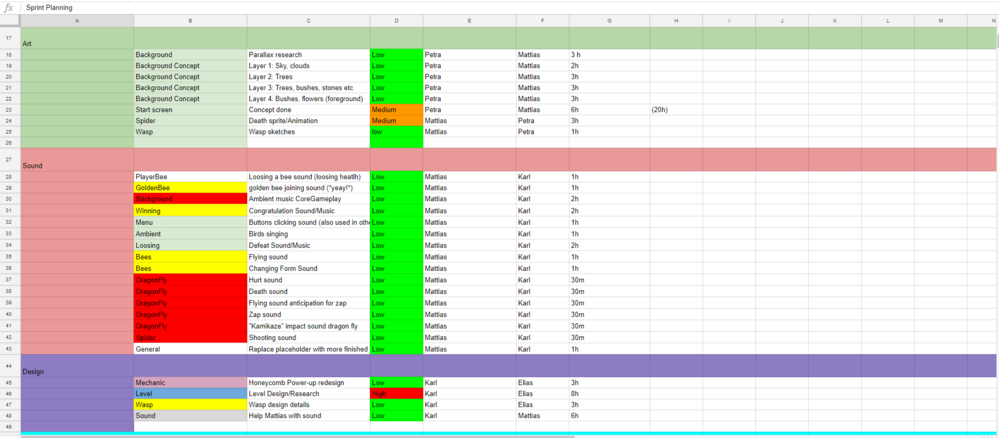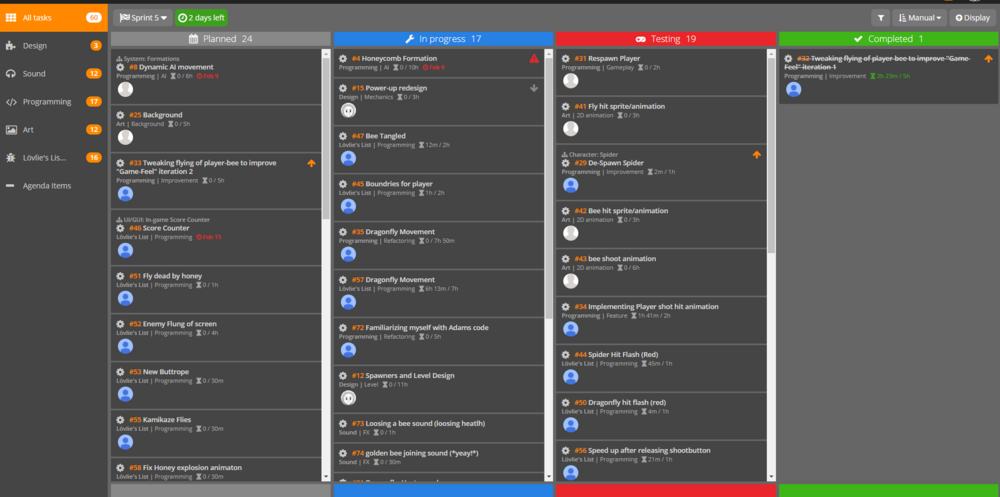Postmortem
Six weeks ago, our group, Group Lychantrope, started the development of a game called ”Beelonging”, based on a Game Design Document written by another group.
During the course of this development we’ve had the opportunity to feel what it’s like to develop a game from scratch. We’ve appointed roles within the team, responsibilites, organized daily and weekly work, set up goals for both each team member as well as the group as a whole. It’s been a great learning experience.
Luckily for me my group has worked well together without any large crisis affecting the development.
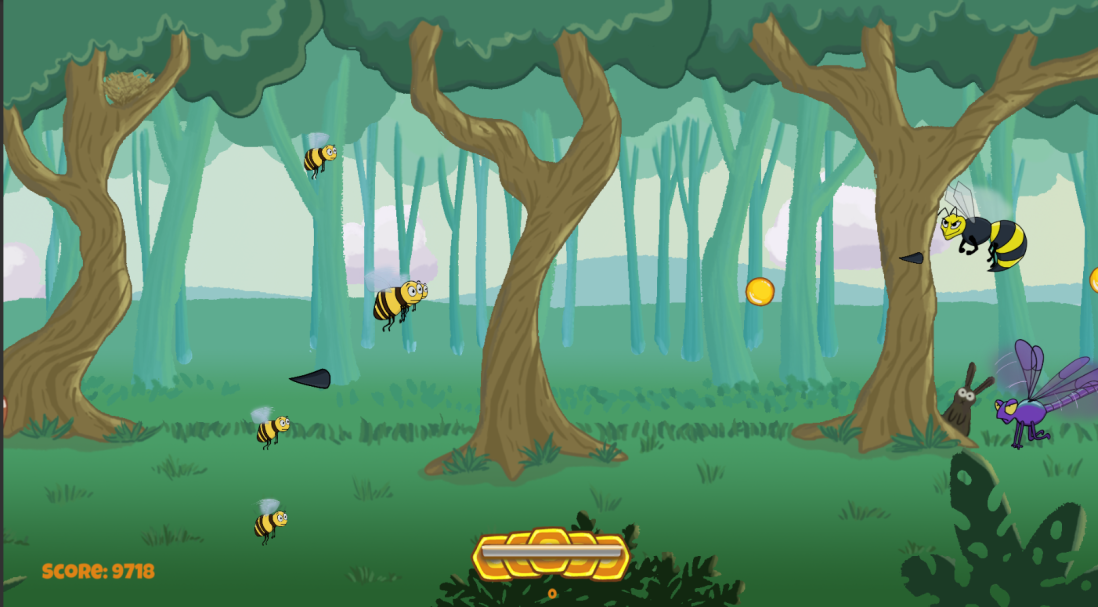
What went right?
First of all, the final product that was presented via a final playtesting session was a great success. Both students and teachers who played it seemed to enjoy it and from the feedback that we were given we felt that we had managed to succesfully create the feelings and aesthetics we wanted the Player to experience.
Our teamwork worked very well throughout the entire process. Besides having the daily stand-ups and the weekly SCRUM reviews we also kept in contact from home via various chat software such as Slack and Discord. There we could keep updating each other on our individual work and prepare for the coming days and weeks. We had good chemistry in the team and I felt that everyone had a voice and their opinions were respected.
When problems came up, such as bugs in the game, or questions about design choices, we could either solve it via online chat or have a meeting, depending on the size of the problem.
So all in all I felt very happy and comfortable with the team and with our teamwork and workflow. Looking forward to continued work!
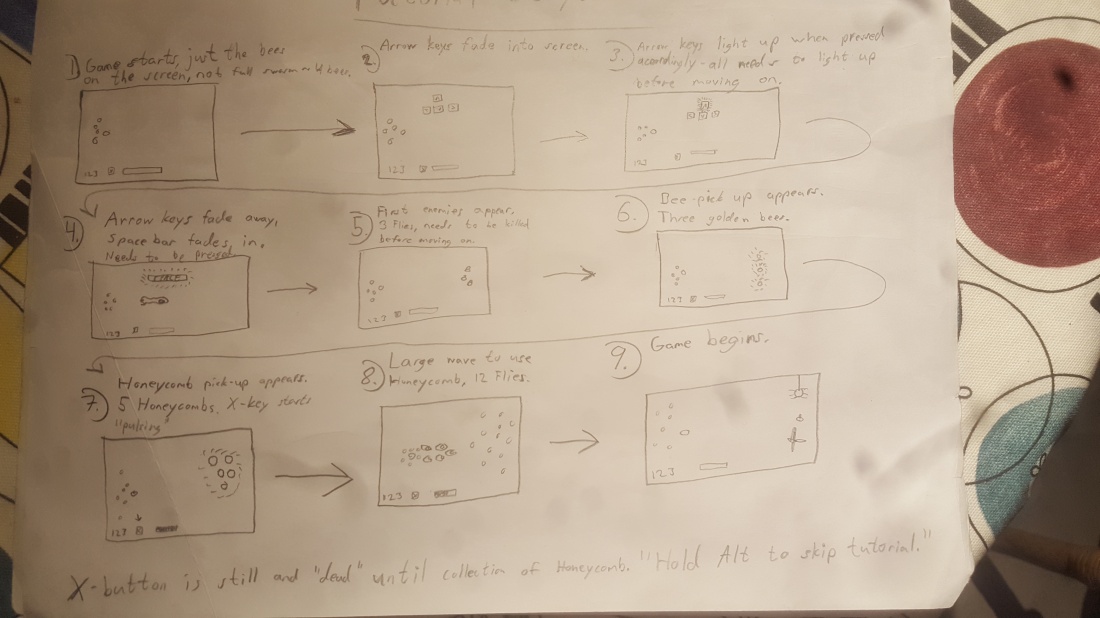
What have I learned?
As this is the very first time I’ve ever developed a video game as well as working together with a team for such a long time it’s been a good learning experience. As the Lead Designer I’ve learned to communicate my design decisions better. At the start I took it for granted that the rest of my team always understood what I was looking for but as it turns out that wasn’t always the case. Not being the loudest or most confident person I felt that this also meant that I grew as a person. That I should be confident with my design and ”drive the design bus”. I’ve also learned what it’s like to be dependent on other persons who in turn are dependent on me in return.
One thing I had to keep reminding myself was to always compare my design decisions to the aesthetic goal. Sometimes, even if an idea sounds great on paper, it might not fit the rest of the game and turn out bad.

Personal Conclusion
So, to conclude, I learned a lot and grew as a designer and as a person. Most of all I had fun. Genuine fun. I’ve never been the type of student to study a course where you have to read 200 pages in two days and have a huge exam and then repeat (think economy or law). Being a video game designer though, and being the Lead Designer, has been a lot of fun. Serious. But still fun. Serious fun.
End Result
The end result of this project was a colorful and cheerful game in the ”shoot ‘em up” genre. In Beelonging, the player controls one bee in a larger swarm of several bees. Together with the swarm the player has to navigate through a scrolling vertical level on their way back to their bee hive, all while fighting off various dangerous insects such as wasps and spiders.
By collecting honeycomb pick-ups scattered throughout the level, the player gain energy which she can then use to bring the entire swarm together for increased offense and defense agains the oncoming enemy insects.
Through the combined effort of the team we have created a game with original art and animation, several programmed and functional enemies who acts correctly in the ways they were designed to act and a scrolling level with a clear start and finish.
Visual and audiotory feedback has been constantly improved and polished into a satisfying and coherent final product.
I feel we managed to develop the product we set out to develop. Our aesthetic goal for Beelonging was to create the feeling of belonging to something – such as a larger group. I believe we have created that feeling in the game via gameplay, visual feedback and audiotory feedback.
To see and experience the end result in person, you can visit the following link down below which brings you to the official website for our finished game – Beelonging.
This is the link which brings you to our website where you can easily download and play the finished product! Enjoy!
// Karl Lindkvist



